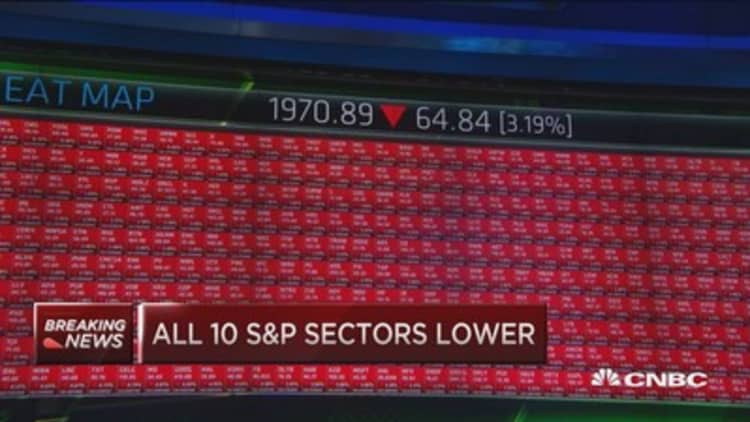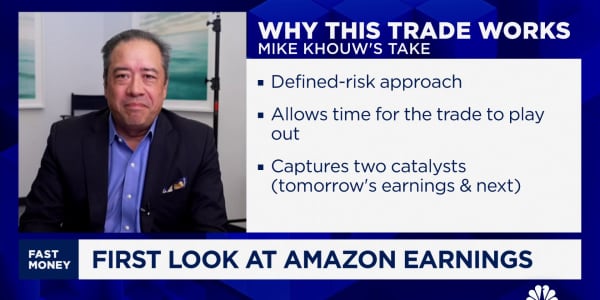
In Monday morning's speedy stock plunge, the market's "fear gauge" managed to reach levels not seen since the financial crisis.
The CBOE Volatility Index, also known as the VIX, surged as much as 90 percent to 53 after Monday's open. The last time the VIX rose above 50 was in March 2009.
The Dow Jones industrial average, and Nasdaq Composite each fell more than 3.5 percent on Monday. With the S&P 500 now down 11.3 percent from its intraday high, the large-cap index is now in correction territory. The VIX rose 45 percent in the rough session.
Read More S&P 500 closes in correction: CNBC Special 7pm ET
The volatility index is calculated based on the prices of S&P 500 options. As investors have flooded into the options market to protect against downside risk, volatility has spiked. The sharp rise also helps spur further VIX increases, CNBC contributor Mike Khouw said.
"When it moves very far, you end up using a lot of options in the calculations that are essentially wing options," Khouw said, referring to options at the extreme high and low end of the spectrum that generally would not be included in calculating the VIX.
In fact, stocks were moving so quickly at the opening of trading that the VIX mechanism temporarily did not disseminate quotes. And even after the VIX quotes hit traders' screens, they were sporadic for the first few minutes.
A CBOE spokeswoman explained to CNBC that the massive move in the S&P led to erratic options prices feeding into the VIX calculation, making it difficult for a VIX quote to be provided.
The VIX has shot up more than 200 percent for August. If it were to end the month at these levels, it would be the biggest one-month percentage gain in history.
Read MoreMarket's 'fear gauge' soars to 2015 high
Khouw said the surge could be a sign that it's time to start buying selectively.
"That probably demonstrates an oversold condition," he said. "Once you start seeing these really sharp VIX spikes, that's a decent time to buy stocks rather than sell them."
Yet some say a new era of heightened volatility is among us.
Noting that actual S&P volatility has spiked, and that the index has finally abandoned the comfort of its well-established range, Brian Stutland of Equity Armor Investments told CNBC that he expects the VIX to remain above its long-term average level of 20 for months to come.






